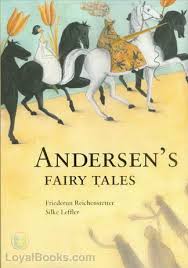The Emperor’s New Clothes
byThe Emperor’s New Clothes presents a kingdom where truth has been overshadowed by image, and perception holds more power than fact. The Emperor, more concerned with fashion than leadership, spends his time indulging in appearances rather than addressing the needs of his people. His desire for attention and admiration makes him an easy target for manipulation. When two clever swindlers arrive claiming to weave a cloth visible only to the wise and competent, the Emperor is instantly drawn to the idea. He sees it not only as an opportunity for a remarkable outfit but also as a tool to measure the intelligence of his advisors. The plan is accepted without scrutiny. Gold and silk are delivered, and the looms begin to “spin,” though nothing is being made. Still, the Emperor watches in excitement, blind to the obvious because of his need to seem enlightened. In this way, deception is fueled by fear, not malice.
The ministers who are sent to inspect the weaving are caught in the same trap. Each one, upon seeing empty looms, believes their failure to see anything reveals a personal flaw. Rather than admit confusion, they report back with praise. They describe the fabric’s color, pattern, and richness with confident detail, all imagined. This lie snowballs, growing stronger as more voices join the chorus. No one wishes to be the one to stand out. The Emperor, though doubtful, believes he must also pretend. If everyone else sees beauty, then he must see it too. His robes are prepared. The tailors mime dressing him in the invisible garments, and he nods with approval, echoing words of admiration he doesn’t truly believe. He is now a participant in the lie he funded. The walk to the procession begins not as a celebration of beauty, but as a parade of denial.
Crowds gather, having heard of the Emperor’s magical new robes. As he walks proudly, exposed yet confident, a silence hangs in the air. People are confused but afraid to speak. What if not seeing the clothes means they are unworthy? So they clap, they cheer, and they nod. The lie has become law, and truth feels dangerous. Then, from the edge of the crowd, a single child’s voice rises. “But he isn’t wearing anything!” The simplicity of the statement cuts through the layers of deception. There is no malice in the child’s words—only honesty. The crowd stirs, and the truth begins to ripple. They laugh, not at the Emperor, but at the absurdity of their silence. In that moment, reality returns.
The Emperor, hearing the laughter and the truth, flushes with shame but continues walking. He does not admit the failure. He does not demand the weavers be punished. Instead, he holds his head higher, hoping to preserve what dignity he has left. His pride, more important than truth, drags the lie forward. The crowd watches, now unsure whether to respect his resilience or mock his stubbornness. The procession ends, but the story begins—passed from voice to voice, growing into legend. Andersen closes the tale not with punishment, but with exposure. It is not revenge, but clarity that wins.
The brilliance of this story lies in how easily its message applies across generations. The Emperor’s mistake wasn’t believing in magic; it was valuing perception more than truth. His court, too, fell victim not to evil but to insecurity. Everyone feared being exposed as foolish, and so they pretended. The story reveals how power can distort honesty and how fear can suppress voices. In the end, a child—free from fear, free from pride—becomes the unlikely hero. That moment is Andersen’s message: truth does not require strength, only clarity. And often, it’s those without status who see things most clearly.
In today’s world, where status, image, and validation often overpower sincerity, the tale feels especially relevant. Social media, for example, functions much like the Emperor’s court. People present a version of themselves crafted for applause, while others applaud out of habit or fear of standing apart. The story warns against this cycle. It urges readers to stay grounded, to question what they’re told to admire, and to speak honestly—even when no one else will. For both leaders and followers, the tale offers a mirror. It reminds us that the most dangerous lies are those everyone agrees to believe. Truth, though sometimes quiet, carries the power to unmake a charade with just one voice.
Ultimately, The Emperor’s New Clothes is not just a cautionary tale—it is a celebration of honesty. It reminds us that perception should never outweigh principle and that humility is far more regal than pride. Through humor and irony, Andersen crafts a timeless lesson: that even the grandest displays mean nothing if they are built on fear and silence. And sometimes, the most important truths come from the mouths of those who have nothing to prove.

